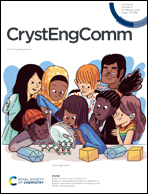Construction of heterostructured BiVO4-{010}/Ag plasmonic photocatalysts by multi-object synchronous optimization of the microstructure of BiVO4 for significantly enhanced visible light driven photocatalytic performance†
Abstract
The rapid recombination of photogenerated charge carriers seriously impedes the photocatalytic activity of BiVO4. We propose an effective strategy to overcome this by constructing heterostructured BiVO4-{010}/Ag plasmonic photocatalysts by the multi-object synchronous optimization of the microstructure of the BiVO4 matrix including the optimization of the active facets, morphology, and surface defects. A solvothermal method was employed to realize the optimization of BiVO4. The influence of BiVO4 with different microstructures on the construction and photocatalytic performance of BiVO4/Ag were studied. In terms of construction, the degree of exposure of the {010} facet of BiVO4 is a key factor in the thermodynamic process determining the formation of the {010} facet–Ag heterojunction, whereas the degree of exposure of the active facets, morphology, and surface defects of BiVO4 are crucial factors in the dynamic processes. The pseudo-first-order kinetic constant (k) of the photocatalytic degradation of Rhodamine B (RhB) for FS-BVO {010} under visible light irradiation is 8.8 and 4.8 times that of SS-BVO {010} and SS-BVO, respectively, and 2.8 and 3.8 times that of SS-BVO {010}/Ag and SS-BVO/Ag, respectively. FS-BVO {010} exhibited the second highest photocatalytic performance, primarily attributed to the promotion of the separation and migration of the photogenerated charge, the increased lifetime of the charge carriers, and more active sites. This depended on the multi-object synchronous optimization of the microstructure, including the preferentially exposed {010} facet, the four-star-like morphology with a stair-stepping hierarchical structure, and the {010} facet defect structure. This suggests that the photocatalytic performance of BiVO4 can be improved further by optimizing the microstructure of the BiVO4 matrix than by constructing BiVO4/Ag based on conventional BiVO4. Furthermore, the k value for FS-BVO {010}/Ag is 4.2 times that of FS-BVO {010}. This enhanced photocatalytic performance may be mainly due to the synergistic effect between the optimized microstructure and the {010} facet–Ag Schottky junction, and the surface plasmon resonance effect of the Ag nanoparticles, which can further extend the absorption of light, suppress the recombination of the photogenerated charge, and prolong the lifetime of the charge carriers. ˙O2− and h+ are the dominant active species in the photodegradation of RhB over FS-BVO {010}/Ag and a possible photocatalytic mechanism is proposed. This work provides new insights into constructing efficient photocatalysts based on matched surfaces/interfaces by optimizing the microstructure of a pure semiconductor for utilization in the field of environmental treatment.



 Please wait while we load your content...
Please wait while we load your content...